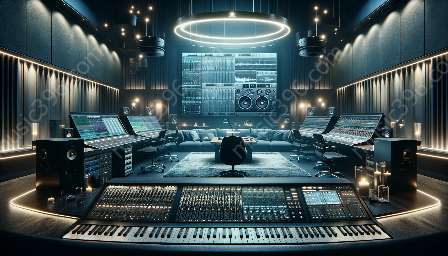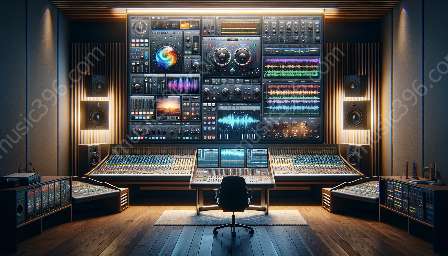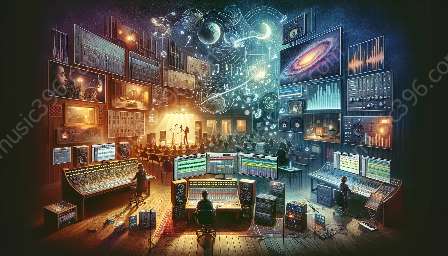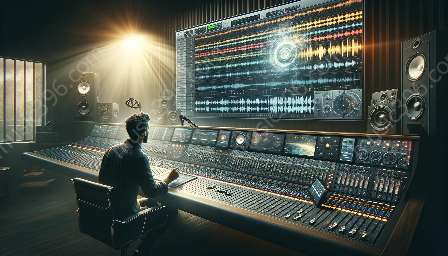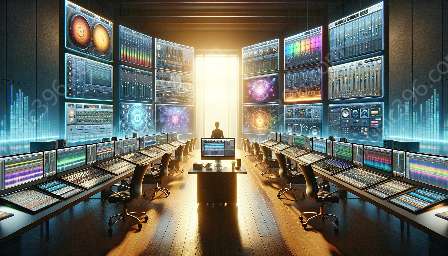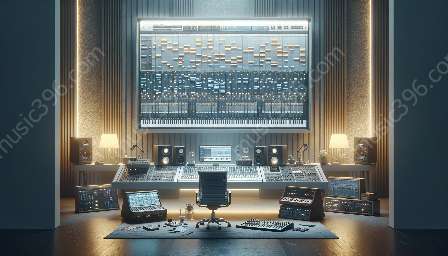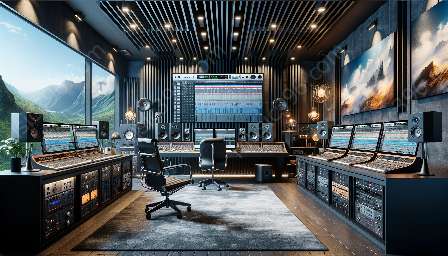Film scoring and sound design are powerful tools for enhancing the emotions and narrative of a film. They rely on different elements, including music, to create a vibrant and immersive experience for viewers. In recent years, the use of drum programming has become increasingly popular in film scoring and sound design due to its versatility and ability to add depth and excitement to the soundtrack.
Drum programming involves creating and manipulating electronic drum patterns and sequences within a digital audio workstation (DAW) to create rhythmic elements for a film's soundtrack. This involves using a combination of virtual drum kits, samples, and synthesizers to sculpt and design unique percussive sounds that complement the visuals and story of the film.
Employing Drum Programming in Film Scoring
When it comes to film scoring, drum programming opens up a world of possibilities for composers and sound designers. It allows them to experiment with a wide range of percussive textures and styles that can add tension, excitement, and drama to specific scenes. Whether it's the pulsating beat of an action sequence or the haunting rhythms of a suspenseful moment, drum programming can be tailored to fit the unique requirements of the film.
By leveraging drum programming in film scoring, composers can create dynamic and evolving rhythmic patterns that seamlessly synchronize with the on-screen action. This can significantly enhance the overall impact of the visual storytelling and elevate the audience's emotional engagement with the film.
Sound Design with Drum Programming
Sound design is another critical aspect of filmmaking that greatly benefits from the inclusion of drum programming. By incorporating carefully crafted percussive elements into the sound design process, audio professionals can add depth, texture, and intensity to the auditory landscape of a film. From crafting futuristic sound effects to layering organic and electronic rhythms, drum programming offers endless opportunities to enhance the sonic atmosphere of a movie.
Furthermore, drum programming empowers sound designers to create immersive and innovative soundscapes that resonate with the thematic motifs and visual aesthetics of the film. By blending traditional percussion with cutting-edge electronic sounds, they can shape a sonic identity that complements and enriches the storytelling experience.
Techniques for Drum Programming in DAW
For those delving into drum programming within digital audio workstations (DAWs), there are numerous techniques and approaches that can be employed to achieve impactful results. Understanding the following techniques can help aspiring composers and sound designers harness the full potential of drum programming in the context of film scoring and sound design:
- Layering and Blending: Utilize multiple drum samples and sounds to create rich, complex rhythms that resonate with the film's narrative.
- Rhythmic Modulation: Experiment with rhythmic variations and tempo changes to add dynamic movement and energy to the soundtrack.
- Automation and Effects: Implement automation and audio effects to manipulate drum patterns and transform them into evolving sonic textures.
- MIDI Programming: Utilize MIDI programming to precisely sequence and arrange drum patterns, allowing for detailed control over timing and velocity.
- Sample Manipulation: Explore the manipulation of drum samples through techniques such as time-stretching, pitch-shifting, and filtering to create unique percussive elements.
Crafting the Auditory Experience
When employed skillfully, drum programming can elevate the auditory experience of a film, heightening its emotional impact and creating a more immersive viewing experience. Its integration into film scoring and sound design represents a creative evolution that aligns with the ever-changing landscape of visual storytelling.
The versatility and expressive potential of drum programming enable composers and sound designers to craft bespoke sonic landscapes that resonate with the thematic, dramatic, and atmospheric elements of a film. By embracing the art of drum programming and mastering its techniques within digital audio workstations, creative professionals can continue to push the boundaries of auditory storytelling and captivate audiences on a deeper level.

